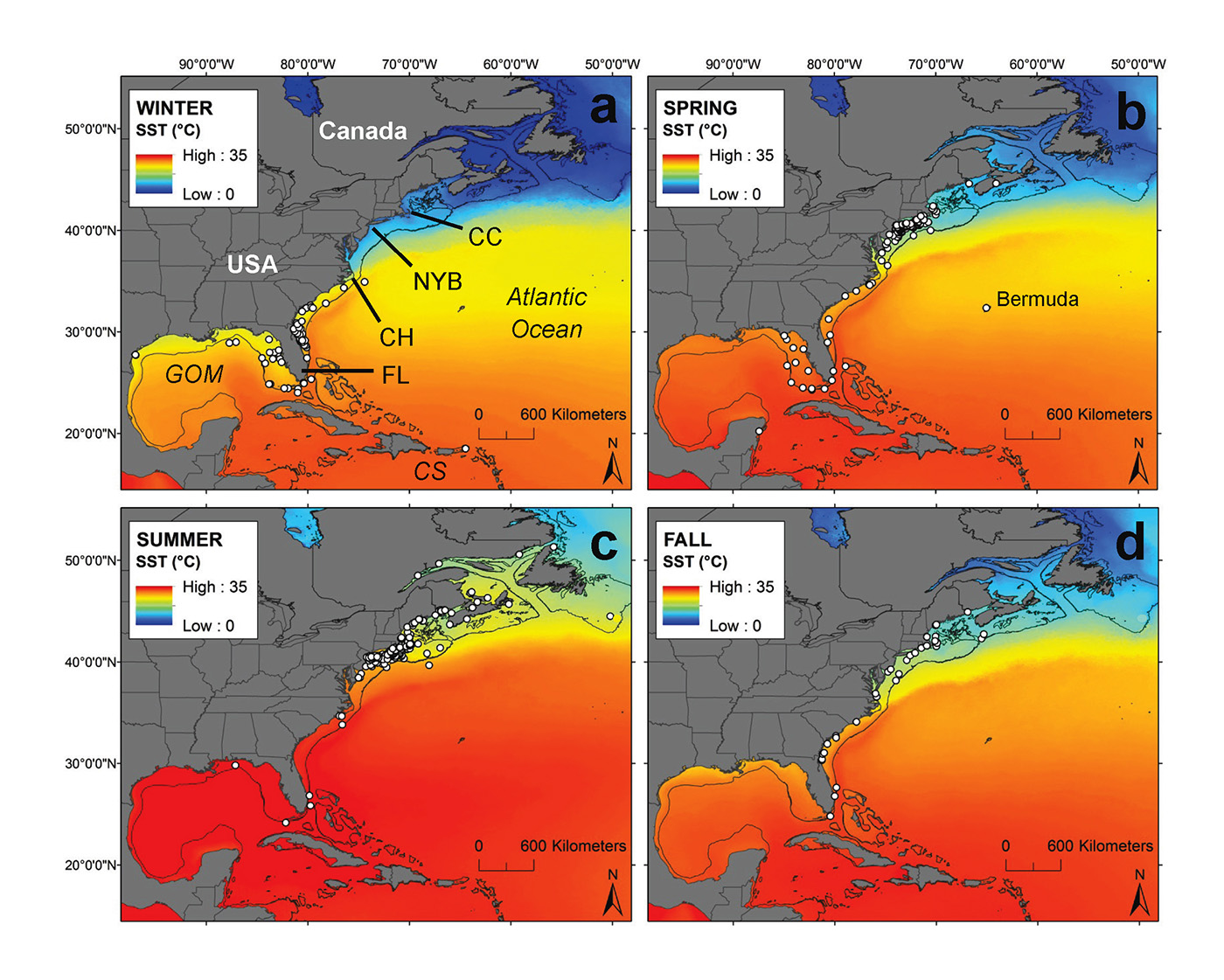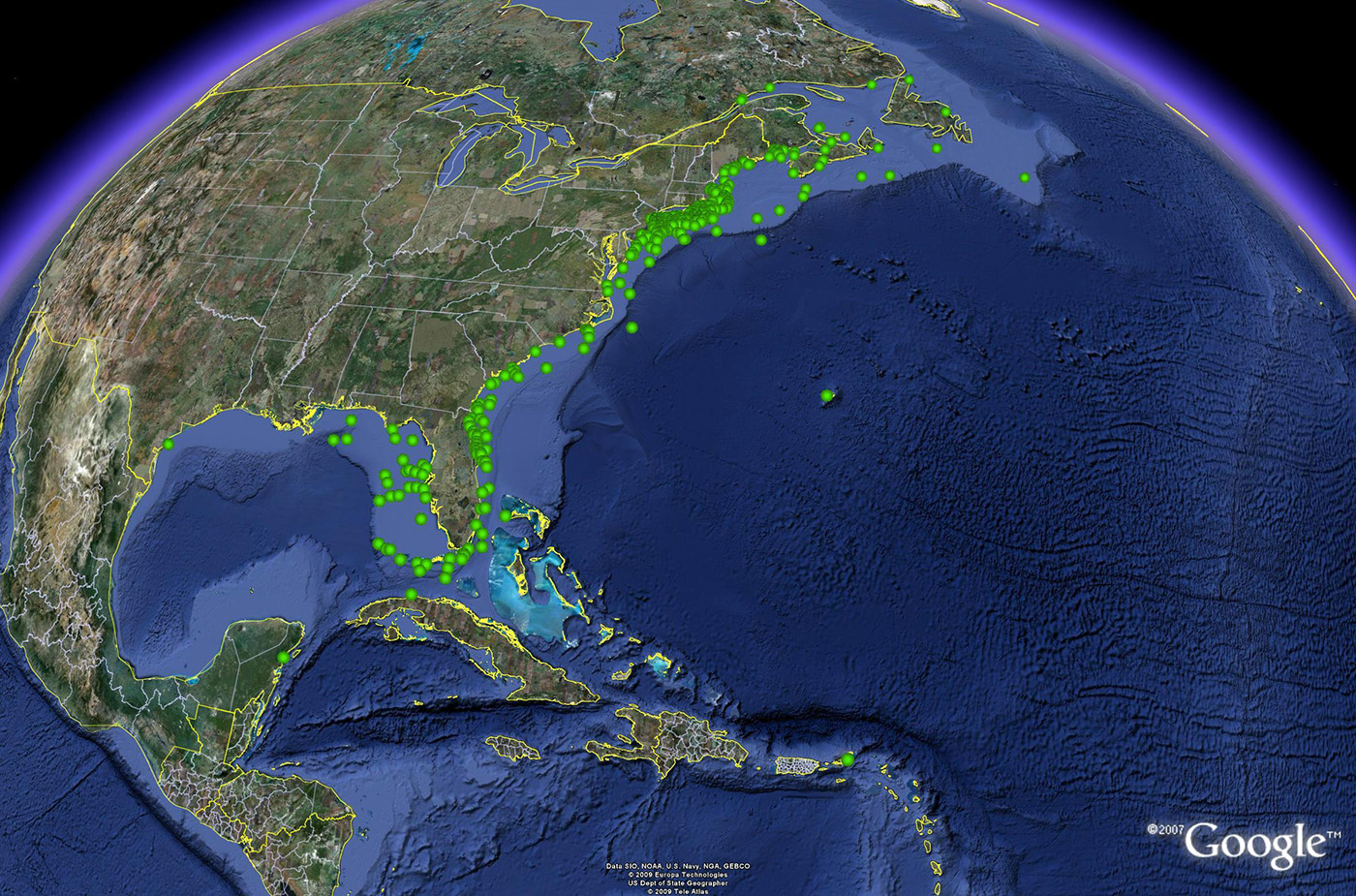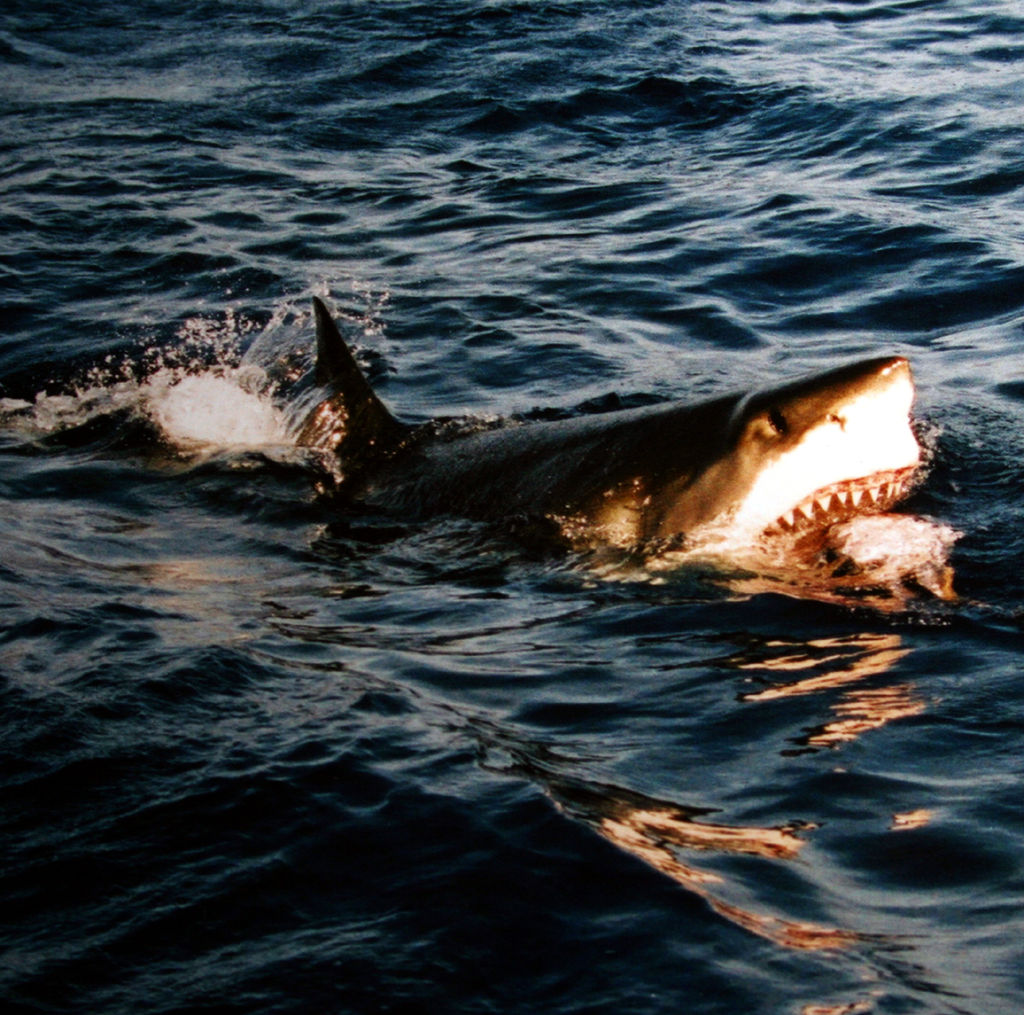The return of Jaws? The following is an extract from a NOAA Fisheries Service Newsroom article, dated June 11, 2014 and with the title above:
White sharks are among the largest, most widespread apex predators in the ocean, but are also among the most vulnerable. A new study, the most comprehensive ever on seasonal distribution patterns and historic trends in abundance of white sharks (Carcharodon carcharias) in the western North Atlantic Ocean, used records compiled over more than 200 years to update knowledge and fill in gaps in information about this species.
Scientists from NOAA Fisheries and colleagues added recent unpublished records to previously published data to present a broad picture of 649 confirmed white shark records obtained between 1800 and 2010, the largest white shark dataset ever compiled for the region. Their study was published June 11 in the journal PLOS ONE.
“White sharks in the Northwest Atlantic are like a big jigsaw puzzle, where each year we are given only a handful of pieces,” said Tobey Curtis, a shark researcher at NOAA’s Greater Atlantic Regional Fisheries Office in Gloucester, Mass. and lead author of the study. “After decades of effort by a lot of researchers, we finally have enough puzzle pieces for a picture to emerge on distribution and abundance patterns. We are pleased to see signs of population recovery.”
Among the findings: White sharks occur primarily between Massachusetts and New Jersey during the summer, off Florida during winter, and with a broad distribution along the U.S. East Coast during spring and fall. The sharks are much more common along the coast than in offshore waters. The annual north-south distribution shift of the population is driven by environmental preferences, such as water temperature, and the availability of prey. In recent years, white sharks have been increasingly associated with the return of gray seal colonies off the coast of Massachusetts.
“White sharks possess life history traits that make them vulnerable to exploitation,” said Nancy Kohler, chief of the Apex Predators Program at NOAA’s Northeast Fisheries Science Center (NEFSC) and a study co-author. “These sharks can live 70 years or more, mature late, and do not produce many young. Their status and highly valued jaws and fins have made them the target of recreational and trophy fisheries in areas where their populations are not protected.”
Opportunistic capture and sighting records remain the primary source of information on this species. The updated information in this study is aimed at improving the conservation and management of white sharks both regionally and internationally, and providing a new baseline for future study.
This study updates understanding of white shark relative abundance trends, seasonal distribution, habitat use, and fisheries interactions, most of which occur with rod and reel, longline, and gillnet gear. White shark records were collected from landings data, commercial fishery observer programs, recreational tournament information, scientific research surveys, commercial and recreational fishermen, and other sources. The records were further classified, based on biological information such as length and life stage – neonate, young of the year, juvenile, or mature. Distribution patterns of each life stage were examined. (Read the complete article here.)





